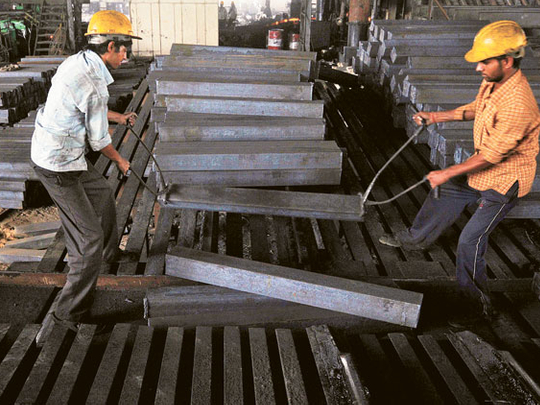
New Delhi: India's inflation rate may "peak" in August and will be about 10 per cent, Kaushik Basu, the chief economic adviser in the finance ministry, said after the price gauge eased for a third straight month in July.
The wholesale-price index rose 9.22 per cent from a year earlier after a 9.44 per cent jump in June, the commerce ministry said in New Delhi on Tuesday. The median of 22 estimates in a Bloomberg News survey was for a 9.2 per cent increase.
"Till December, inflation will stay around the same levels," Basu told reporters in New Delhi on Tuesday. "Next month, it will peak and will be close to 10 per cent. After December, we'll see a sharp drop in inflation."
Price gains in India are the fastest among the so-called BRICS nations and policymakers have raised borrowing costs 11 times since the start of 2010. Central bank Governor Duvvuri Subbarao said August 12 that it's "too early to say" whether there would be a change in stance amid threats to expansion posed by Europe's debt crisis and a faltering US recovery.
Favour tightening
"Higher inflation readings over the next few months are more or less factored in by markets," said Sudhakar Shanbhag, who manages $1.9 billion as chief investment officer of Mumbai-based Kotak Mahindra Old Mutual Life Insurance Ltd. "The inflation indicators are favouring further tightening of rates."
He expects the central bank to raise the repurchase rate by a quarter of a percentage point to 8.25 per cent on September 16.
India's ten-year government bond yields were little changed at 8.30 per cent. The Bombay Stock Exchange Sensitive Index fell 0.4 per cent and the rupee gained 0.1 per cent to 45.29 against the dollar.
Inflation erodes spending power, particularly in a nation like India where the World Bank estimates three-quarters of the population live on less than $2 a day.
India yesterday revised its wholesale-price inflation reading for May to 9.56 per cent from 9.06 per cent. By comparison, consumer prices rose 6.9 per cent in Brazil, 9 per cent in Russia, 6.5 per cent in China and 5 per cent in South Africa.
Prime Minister Manmohan Singh said yesterday taming inflation in the South Asian nation would be his coalition's "top-most" priority.
The July inflation data includes the impact of higher diesel and cooking gas costs announced by India on June 24.
Pricing power
Indian companies continue to have the power to pass on higher prices to consumers and there is a need to curb inflation expectations, Subbarao said last week. The Reserve Bank on July 26 maintained its growth forecast of 8 per cent for the current fiscal year ending March 31. The economy expanded 8.5 per cent the previous year.
Coal India Ltd, the world's largest producer of the fuel, posted a 63 per cent increase in profit during the April-June quarter from a year earlier after it increased prices and demand rose. Steel output by companies including Tata Steel Ltd climbed 12.5 per cent in June from a year ago, compared with a 6.1 per cent gain in May, according to the commerce ministry.
"Overall, there are reasons for the RBI to tighten, but a wait-and-see approach cannot be ruled out if the global backdrop worsens," Rajeev Malek, a senior economist at CLSA Asia Pacific Markets in Singapore, said in an emailed note before the inflation report on Tuesday.
Central bankers in most advanced nations are racing to shield their economies from fiscal tightening and lopsided currency swings that threaten a new global recession.
The European debt crisis has shown no sign of abating with investors' concerns rattling France last week and the European Central Bank starting to buy Spanish and Italian debt.












